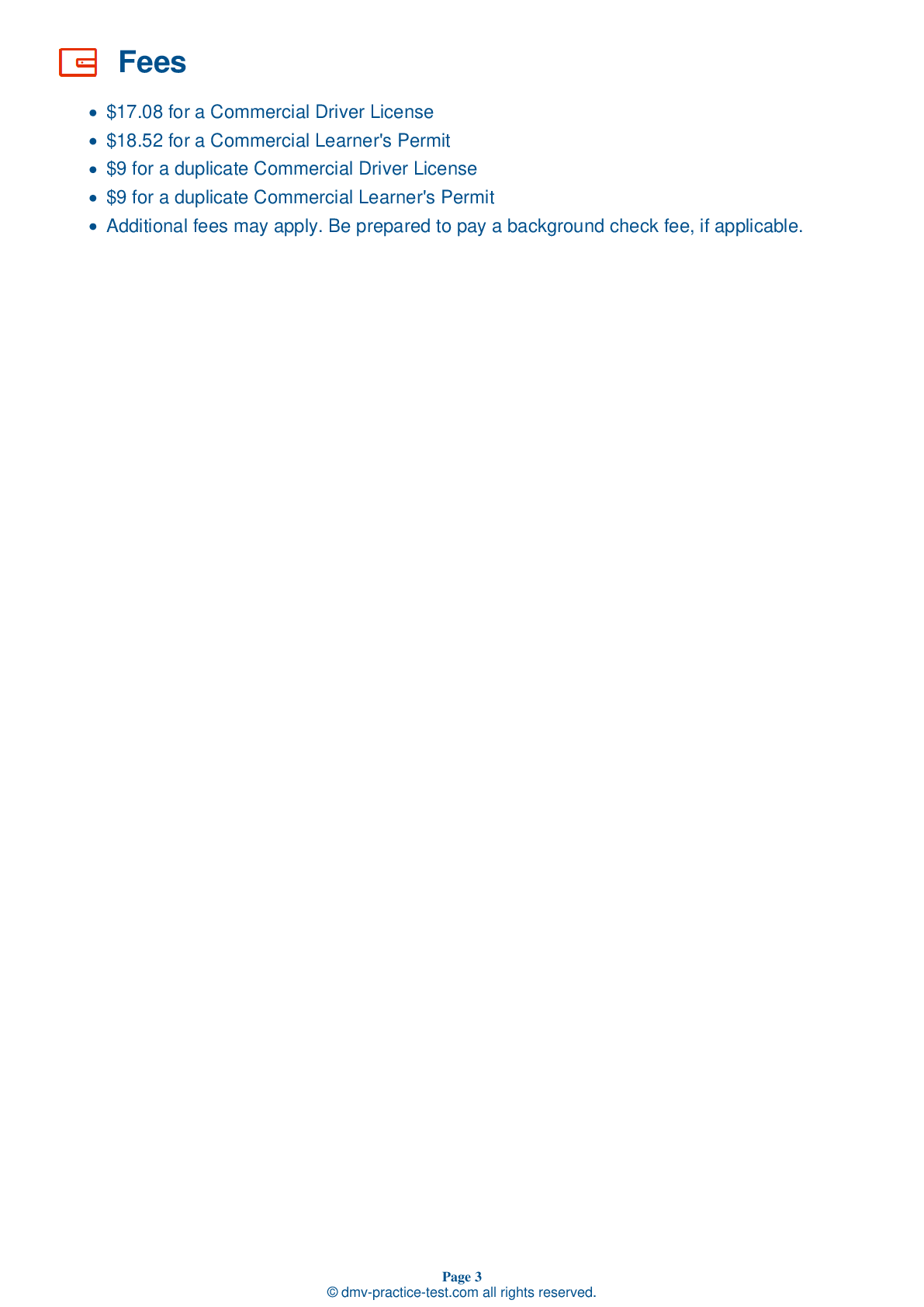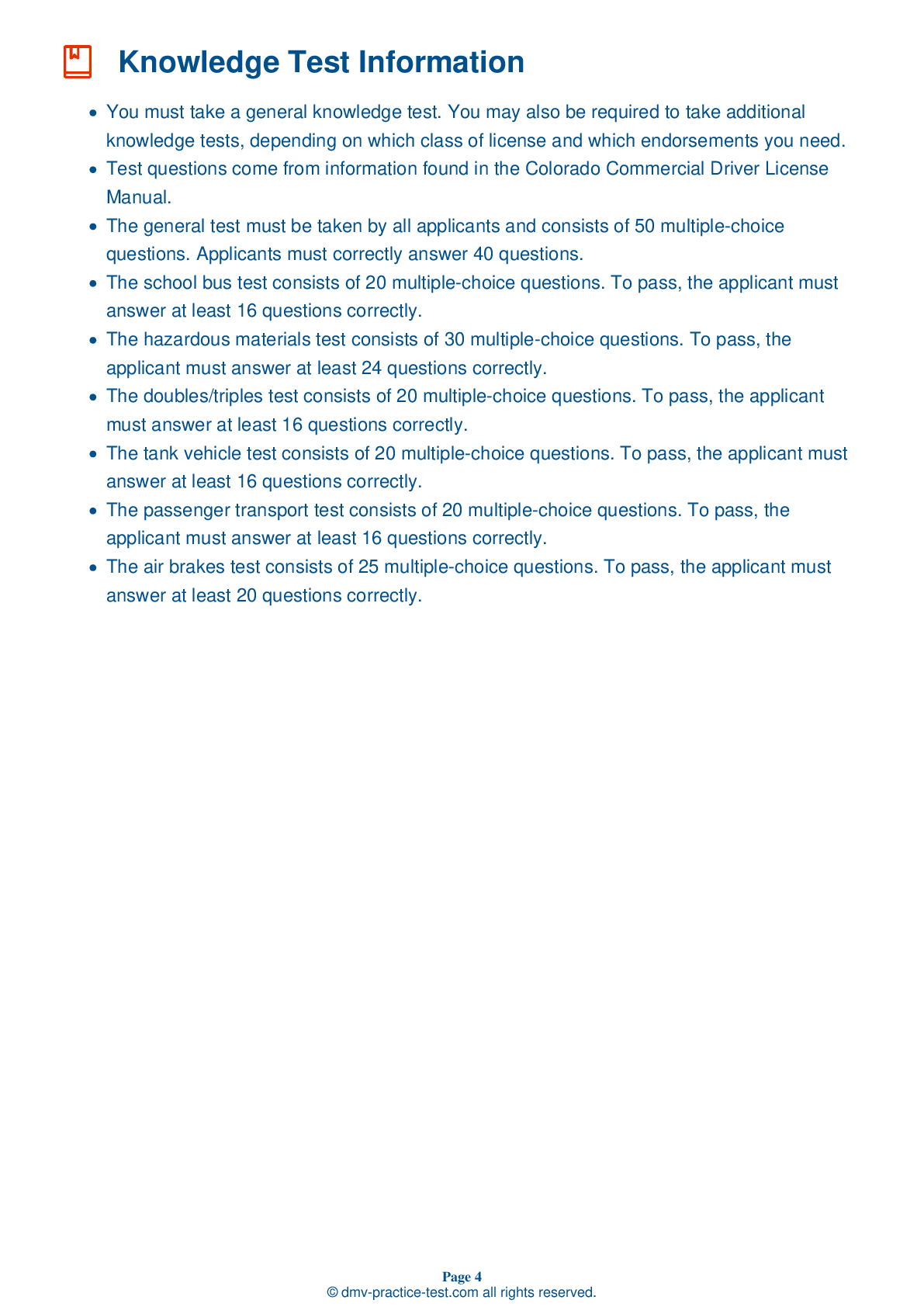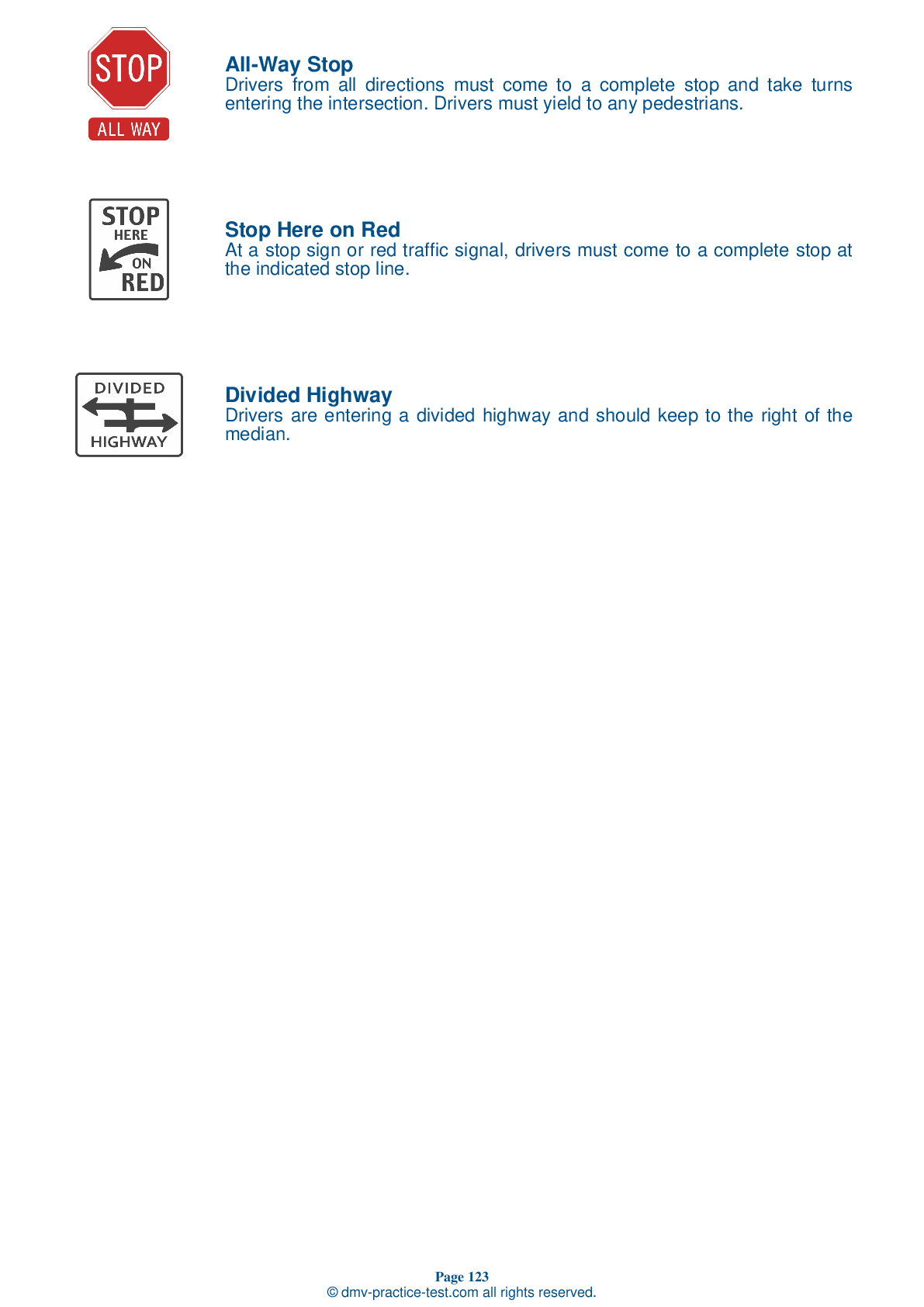HazMat #1
Hazmat Test | Colorado 2026 #1 Page 5 of 5
On our website, we provide FREE practice - CDL hazmat test online! The official exam test consists of several obligatory parts, with all of them checking your knowledge of different blocks of road rules. If you need to obtain a CO CDL hazmat endorsement in 2026, practice as much as possible. Free sample tests published on our website will help you check and improve your knowledge and boost your grades. Please bear in mind that Colorado requirements for issuing a hazmat endorsement for CDL may vary from those established in other states.
30
24
20
25 . If a product requires a "Poison Inhalation Hazard" placard, the placard must be used when transporting:
The product in a leaking container.
For applicable materials, the "Poison Inhalation Hazard" placard and the appropriate hazard class placard must always be displayed, even for small amounts of the materials.
26 . When you are seated behind the steering wheel, shipping papers should be:
Taped to the passenger's side window.
When transporting hazardous materials, shipping papers should be kept in a pouch in the driver's side door, or in another location where the driver is able to easily reach them while their seat belt is fastened. The papers must be easily visible to anyone who is entering the cab.
27 . If cargo is leaking, you should:
Spray the leaking containers with water.
If you discover a leak in a cargo of hazardous materials, identify the materials in question by using the shipping papers, labels, or package location. Do not touch the leaking material.
28 . What shape is a placard indicating hazardous materials?
Octagon
In general, vehicles carrying hazardous materials are required to display diamond-shaped warning signs on all four sides. These warning signs are called "placards."
29 . Emergency response information provided by the shipper must include:
How many people should respond in the event of an accident.
At a minimum, emergency response information must include the basic descriptions and technical names of the materials being transported; immediate hazards to health; risks of fire or explosion; immediate precautions to be taken in the event of an accident or incident; immediate methods for handling fires; initial methods for handling spills or leaks in the absence of fires; and preliminary first aid measures.
30 . Shipping papers:
Can be kept as a digital file.
For all shipments of hazardous materials, the shipper must use shipping papers to inform drivers and dockworkers of the risks presented by the cargo.
Search the best driving school in your neighbourhood
2026 Colorado | Frequently Asked Questions
To secure a CDL Doubles/Triples endorsement in Colorado, you must already hold a valid CDL. You'll need to pass a knowledge test on handling large trucks with multiple trailers. After passing, the endorsement will be added to your CDL. Remember, this endorsement does not cover the operation of motorcycles or school buses.
To obtain a Colorado CDL Doubles/Triples license, you should first have a valid Colorado CDL. Then, you'll need to pass the Doubles and Triples endorsement test. This test covers topics like coupling and uncoupling, inspecting doubles and triples, and handling. After passing the test, the endorsement will be added to your CDL.
While Colorado doesn't specifically require specialized training for a CDL Doubles/Triples endorsement, it's highly recommended. Training can ensure you're prepared for the knowledge test and safe operation of these vehicles. Experience driving a single trailer truck may also be beneficial, but isn't required. The key requirement is passing the endorsement knowledge test.
Yes, to obtain a CDL Doubles/Triples endorsement in Colorado, you must pass a written knowledge test. This exam focuses on the safe operation and handling of large trucks with multiple trailers. It's important to study thoroughly, using resources like the Colorado CDL Handbook, to ensure success on this test.
For the CDL Doubles/Triples endorsement in Colorado, you're not required to perform a skills or road test. The endorsement solely requires passing a written knowledge test. This test covers topics like coupling and uncoupling, inspecting doubles and triples, and managing the vehicles on the road. Practical skills are important for safe driving but aren't formally tested for this endorsement.
No, it is not permissible to operate double or triple trailers in Colorado without a valid CDL Doubles/Triples endorsement. This endorsement is necessary to ensure that drivers have the specialized knowledge and skills required to safely operate such vehicles. Driving without the proper endorsement can result in legal penalties.
In Colorado, you can add the CDL Doubles/Triples endorsement to your existing commercial driver's license. You don't need to initiate a new application for a separate license. However, you must pass the written knowledge test specific to doubles/triples operation. After passing, the endorsement is added to your current CDL.
Yes, even with a CDL Doubles/Triples endorsement, Colorado drivers must adhere to specific rules. These include a maximum trailer length of 28.5 feet for each unit in a set of doubles, and the total weight of all units combined cannot exceed 80,000 lbs. Also, drivers must follow all federal and state transportation laws, including hours of service regulations.
In Colorado, the maximum legal weight for a vehicle, including double or triple trailers, is 80,000 pounds. The maximum length for a single trailer is 57 feet 4 inches. For double/triple trailers, the combined length should not exceed 100 feet. However, these restrictions may vary depending on road and bridge limits.
Yes, safety is paramount when operating double/triple trailers. Drivers must follow federal and state laws, including speed limits and hours of service regulations. They should also be well-versed in coupling and uncoupling procedures, inspecting the coupling system regularly. Additionally, they must understand the high rollover risk associated with these vehicles and ensure proper cargo distribution to prevent accidents.




